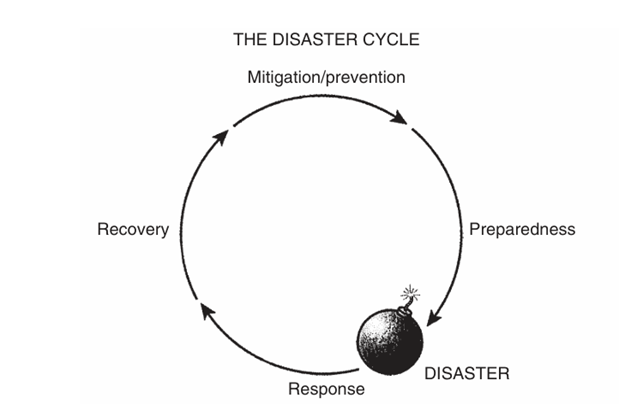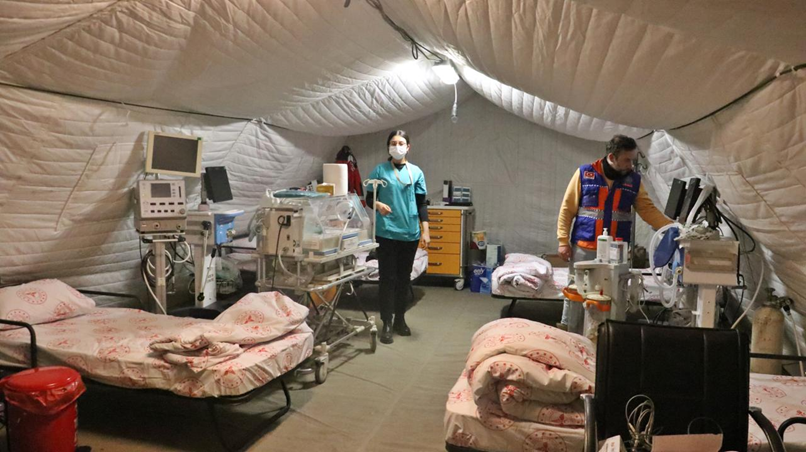Disaster medicine holds a critically important place during times of crisis. Due to this significance, it is an essential and continuously updated field within Health Policies in every era.
The primary goal of disaster medicine is to ensure the rapid and effective delivery of healthcare services, particularly during extraordinary situations such as natural disasters, wars, and epidemics.
In disasters, the process generally follows a pattern known as the "Disaster Cycle," which consists of the phases: mitigation–prevention, preparedness, response, and recovery. Practitioners of disaster medicine are involved in every stage of this cycle.

Gregory R. Ciottone, "Introduction to Disaster Medicine", Disaster Medicine
Definition and Scope of Disaster Medicine
Disaster medicine is a scientific discipline that encompasses the prevention of anticipated health problems during disasters, the epidemiology of disasters, and rehabilitative practices along with management strategies that contribute to planning efforts.
As a discipline formed by the integration of disaster management and emergency medicine, disaster medicine also includes areas such as disaster communication, disaster technology, hospital disaster plans, medical search and rescue, first aid, and trauma management.
History of Disaster Medicine
Conceptually, disaster medicine—like the concept of disaster management—was first introduced through military-based institutions. Having evolved into a formal discipline in the early 1980s, disaster medicine continues to be an active and developing field today.
The first International Congress on Disaster Medicine was held in 1973 in Mainz, Germany.
To take more effective steps in disaster preparedness, pre-hospital care, public health, and disaster health, the International Association of Disaster Medicine was established in 1975, followed by the founding of the World Association for Disaster and Emergency Medicine (WADEM) on October 2, 1976.
In Türkiye, the first master’s program in this field was launched by the Department of Public Health at Hacettepe University Institute of Health Sciences, while the first doctoral program was initiated by the Bezmialem University Institute of Health Sciences.
Application Areas of Disaster Medicine:
- Pre-Hospital Healthcare Services
- Medical Rescue Teams
- Disaster Triage
- Emergency Department and Other Clinical Branch Medical Services
- Psychological Support Services
- Public Health Services
- Patient Referral and Transport Services
- Logistical Services
- End-of-Life (Funeral) Services
Disaster Medicine in Türkiye
- Steps such as pandemic planning carried out before and during the COVID-19 outbreak, phased restriction measures, the establishment of a scientific advisory board specific to the issue, and the implementation of therapeutic services all developed within the framework of disaster medicine.
During this period, the Türkiye Disaster Response Plan (TAMP) lacked a section specifically dedicated to pandemic coordination. As a result, the authority to coordinate—which normally lies with the Disaster and Emergency Management Authority (AFAD)—could not be effectively exercised, and AFAD was partially sidelined. Instead, the process was managed in accordance with the Pandemic Preparedness Plan prepared by the Ministry of Health, based on guidelines from the World Health Organization (WHO).
- In the context of the disaster cycle observed during the 2023 Kahramanmaraş earthquakes, several interventions were carried out within the framework of disaster medicine. These included acute response efforts, medical rescue operations, the establishment of field hospitals by the Ministry of Health, the Turkish Armed Forces, UMKE (National Medical Rescue Teams), the Turkish Red Crescent, and international medical teams, as well as evacuation (via air and helicopter ambulances), and psychosocial support provided by healthcare professionals and field volunteers.


